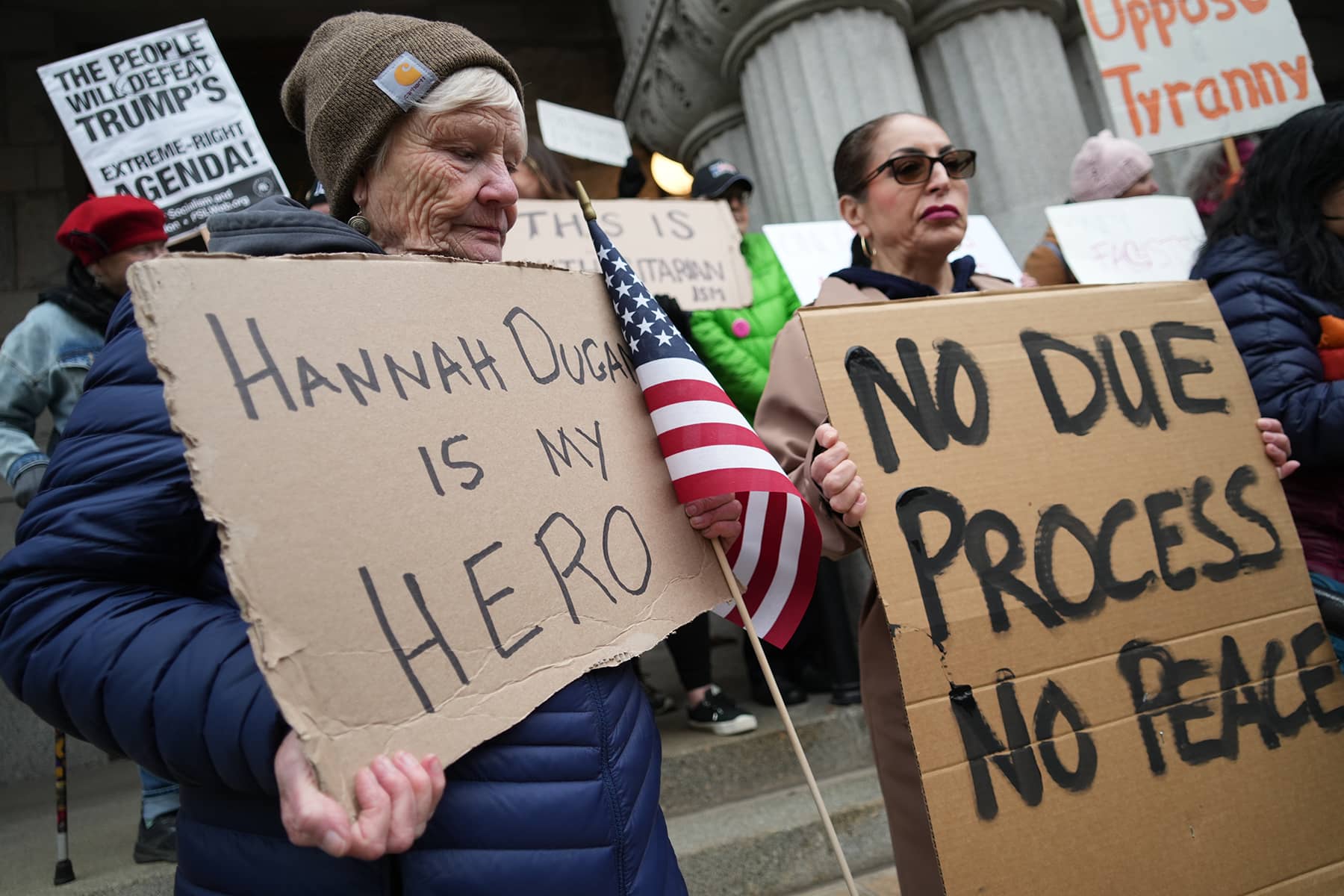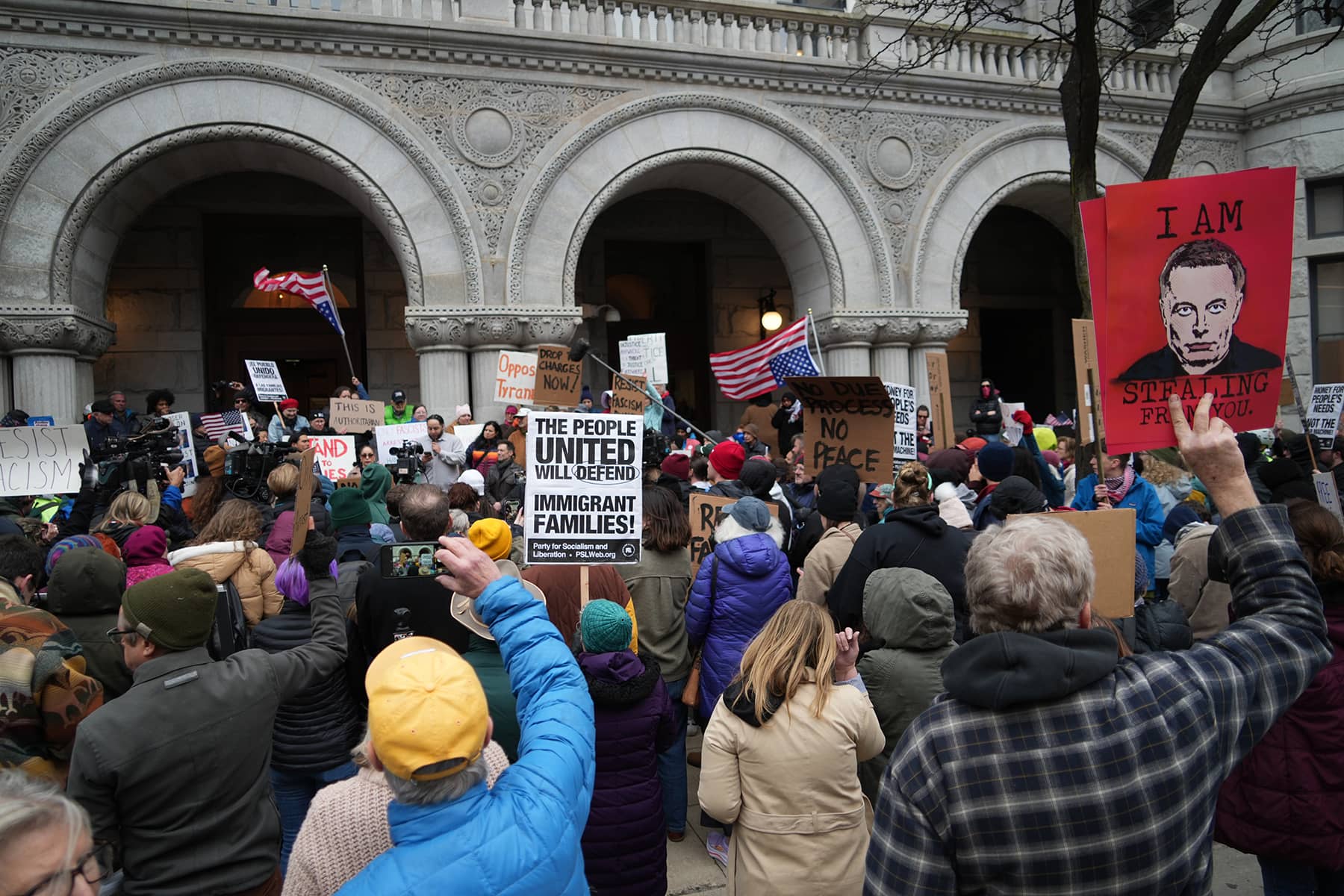
The federal criminal complaint against Milwaukee County Circuit Judge Hannah Dugan, filed by the FBI on April 25, provides a stark example of a case that tells a truth, but deliberately withholds the full truth.
It is a distinction that fundamentally weakens the government’s felony obstruction claim and exposes the political motivations behind the prosecution.
At issue is the government’s allegation that Judge Dugan obstructed immigration enforcement efforts by U.S. Immigration and Customs Enforcement (ICE) at the Milwaukee County Courthouse.
The FBI’s affidavit charges that Judge Dugan interfered with ICE’s attempt to arrest an undocumented immigrant, Eduardo Flores-Ruiz, by ordering federal agents to leave and by allegedly assisting Flores-Ruiz’s quiet departure through a restricted area.
On its face, the document appears methodical and troubling. However, a closer legal analysis reveals deep structural problems.
THE CORE OF THE GOVERNMENT’S CASE
The FBI charges Judge Dugan under 18 U.S.C. § 1505, obstruction of a proceeding before a federal agency. To secure a conviction under this statute, prosecutors must prove that Judge Dugan:
- Knew about an official federal proceeding, in this case, immigration removal efforts.
- Acted with corrupt intent to obstruct or impede that proceeding.
- Took affirmative steps to interfere with ICE’s lawful duties.
The affidavit painstakingly documents Judge Dugan’s confrontation with ICE officers, her insistence that they lacked a judicial warrant, and her actions to usher Flores-Ruiz through nonpublic courthouse areas to avoid arrest.
Yet this framing, while technically truthful, strategically omits essential legal realities that render the case precarious.
WHAT THE COMPLAINT HIDES IN PLAIN SIGHT
The agents came to the courthouse armed not with a judicial warrant, but with an administrative warrant. That is a civil immigration enforcement document signed internally by ICE officials, not a neutral magistrate.
Administrative warrants lack the legal power to enter private spaces or compel arrests in secured areas.
They are fundamentally different from judicial warrants authorized by a court, which are the legal standard for forcible arrest or entry under the Fourth Amendment.
Judge Dugan’s actions, insisting on seeing a judicial warrant, questioning ICE’s authority, and limiting access to restricted court areas, were not unlawful. To the contrary, she was legally entitled and arguably obligated to protect the integrity of her courtroom and courthouse areas under judicial control.
In fact, longstanding constitutional law gives judges broad authority over their courtrooms to ensure orderly proceedings and protect litigants and the public.
There is no law requiring judges to assist federal immigration enforcement, especially on the basis of administrative paperwork that does not meet constitutional thresholds for due process or seizure.
The FBI affidavit completely fails to acknowledge these critical legal limitations, creating a misleading narrative by omission.
STRUCTURING FOR POLITICAL EFFECT
Beyond omitting key legal facts, the affidavit engages in character framing: repeatedly describing Judge Dugan as “angry,” “visibly upset,” and “confrontational.”
These emotionally charged descriptions prime readers to view Dugan’s behavior as unprofessional or lawless. The disingenuous effort is designed to subtly lay the groundwork to paint her actions as criminal, rather than principled or protective of constitutional rights.
Meanwhile, the FBI emphasizes the inconvenience to federal agents, such as the need to chase Flores-Ruiz after he fled, while minimizing the constitutional implications of ICE conducting immigration arrests inside a county courthouse without judicial authority.
This rhetorical structure, blending selective fact presentation with emotional shading, suggests that the affidavit was written less to survive rigorous courtroom scrutiny and more to generate political headlines portraying Judge Dugan as obstructive toward federal immigration policy.
THE LEGAL WEAKNESS OF THE FELONY CHARGE
In reality, the government’s case faces a steep uphill battle. Corrupt intent, which is the critical element for felony obstruction, will be nearly impossible to prove beyond a reasonable doubt.
Judge Dugan’s insistence on judicial warrants, her control over courtroom spaces, and her direction of courtroom traffic are all actions that can be easily defended as lawful exercises of her judicial authority, not corrupt acts intended to thwart justice.
Even if her methods were unusual or aggressive, they fall well within the boundaries of lawful discretion afforded to judges under state and federal law. Without clear evidence that she acted with a dishonest purpose, rather than to maintain courtroom order or uphold constitutional protections, the obstruction charge collapses.
In addition, federal courts are historically reluctant to criminalize judicial decision-making absent overwhelming evidence of bribery, fraud, or naked corruption, none of which is alleged in this situation.
A TRUTH, BUT NOT THE TRUTH
The FBI’s criminal complaint against Judge Dugan tells a version of events that is accurate in isolation but deeply misleading in its omissions.
It papers over the profound constitutional deficiencies in ICE’s authority, buries Judge Dugan’s legitimate judicial concerns, and inflames emotional reactions through careful phrasing.
Legally, the complaint supports a probable cause finding for arrest, which is a very low threshold. But it does not build a case strong enough to withstand serious judicial review or a determined defense.
The case against Judge Dugan can be seen in no way other than as a political stunt, and not a sustainable felony prosecution. It is structured for media consumption, not for justice.
© Photo
Lee Matz

















